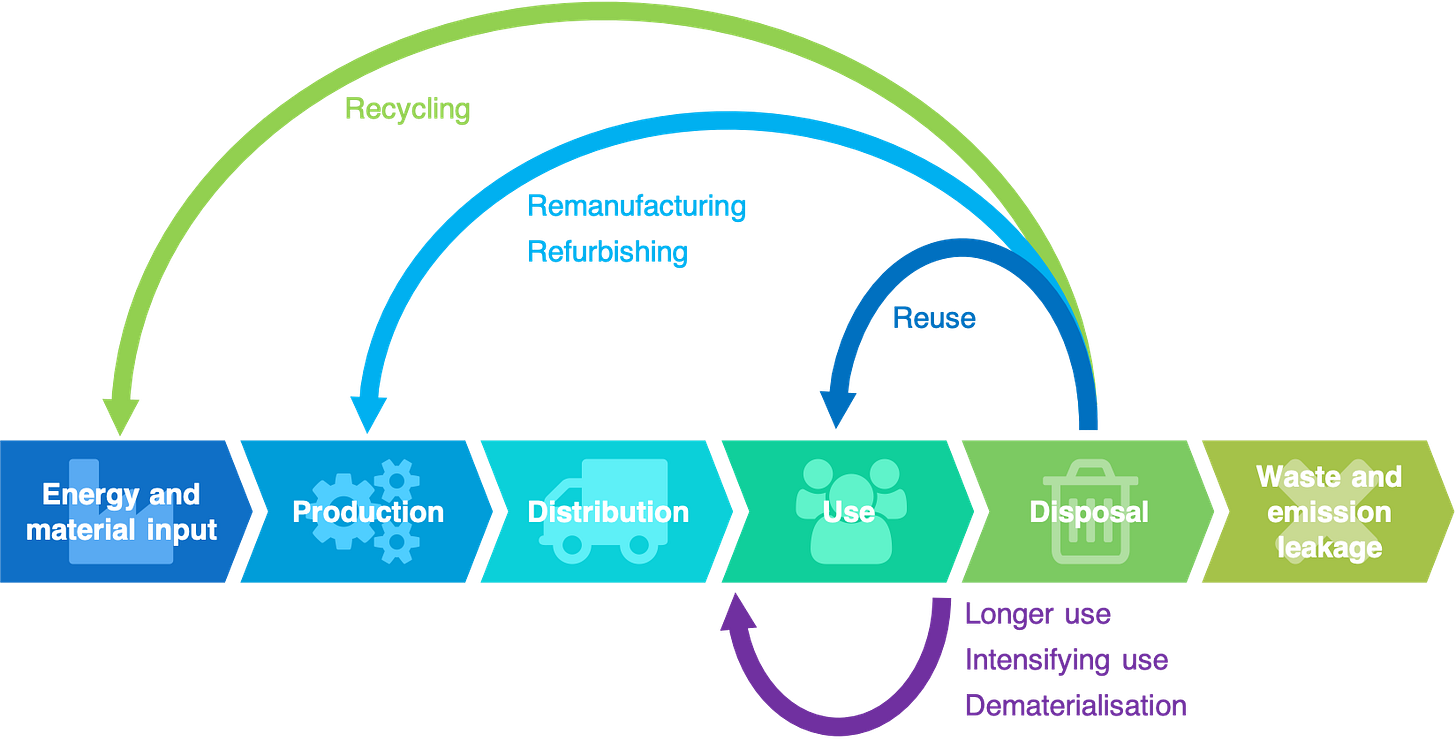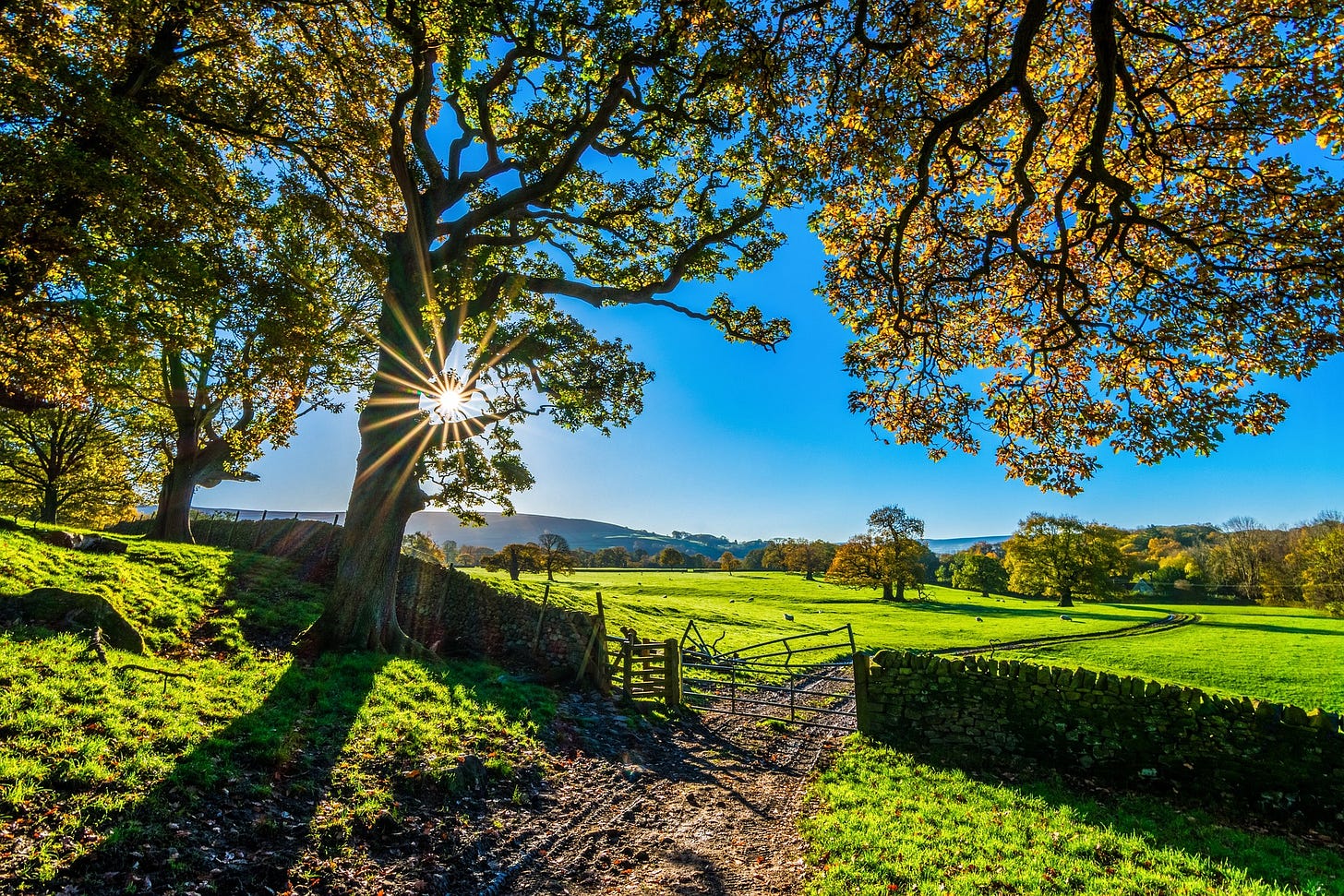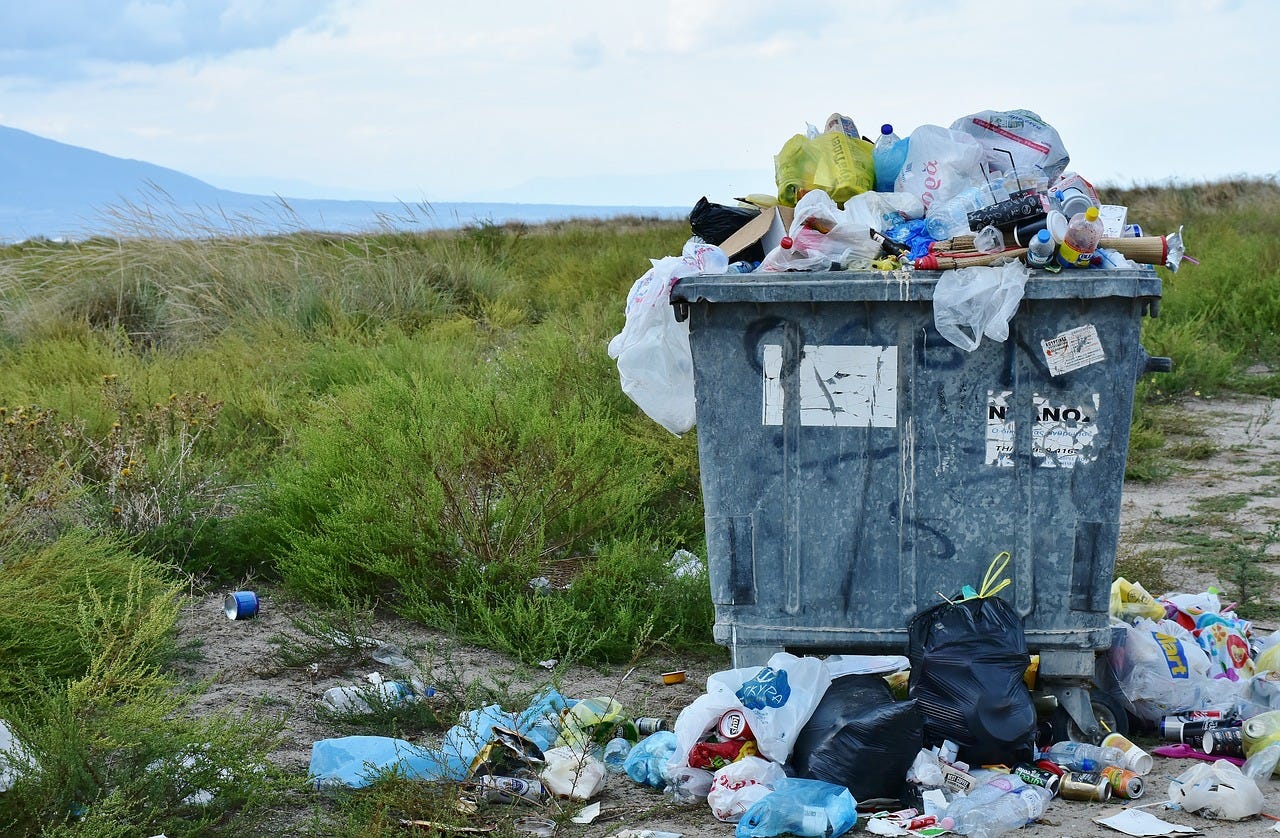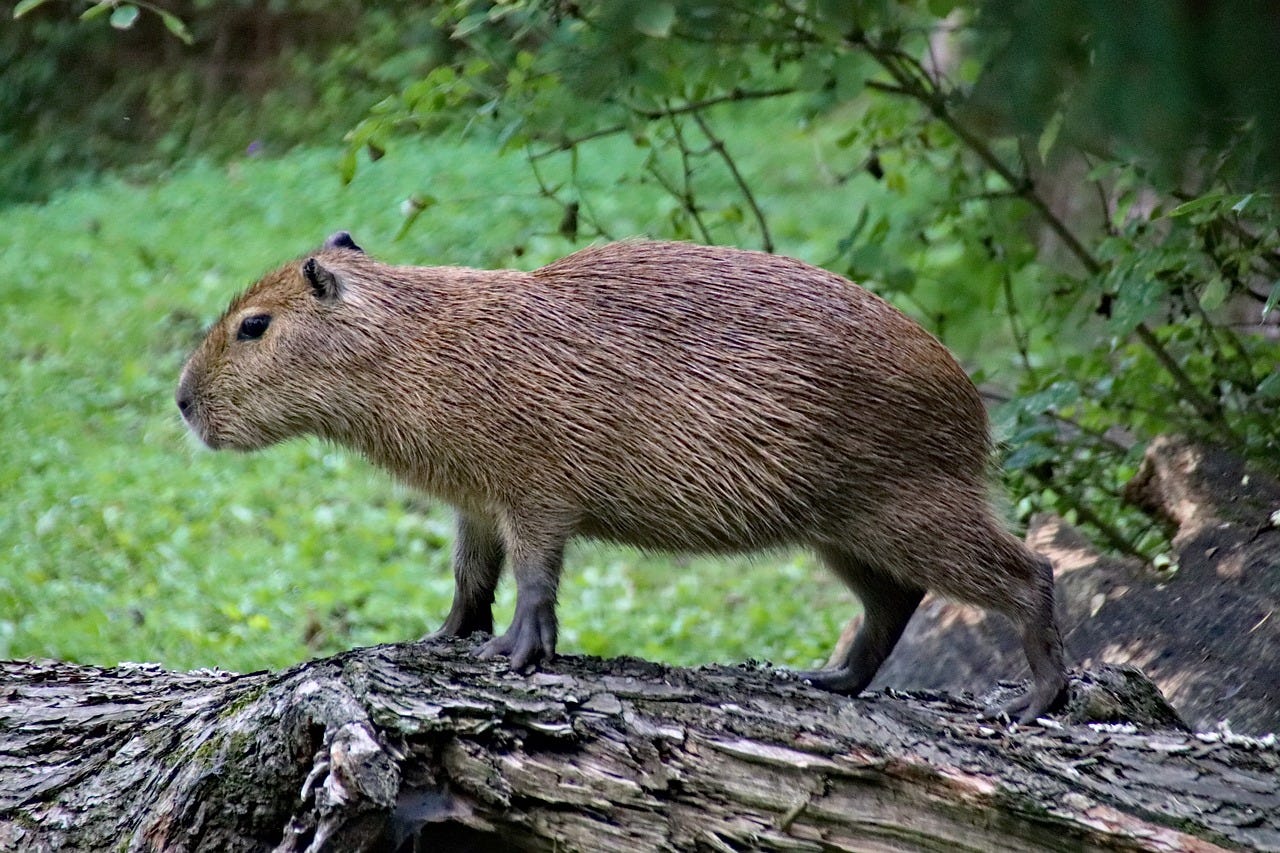Reduce, Reuse, Recycle, Rebellion
"Silo" assumes a dystopian future with a perfectly circular economy
Nearly all environmental problems can be boiled down into one dynamic — society is taking too much stuff out of the Earth for life to continue indefinitely.
Climate change? Too much mining for fossil fuels, which we burn and heat up the atmosphere. Algal blooms? Too many nutrients from fertilizers running off into rivers. Endangered species? Too much converting land into parking lots (or farms or suburbs or whatever), which destroys habitat — or too much hunting and fishing, which is driving those species to extinction.
So for decades, green-minded economists have dreamed of a “circular economy”, one in which no additional raw materials are taken out of the Earth, where the whole economy runs on the stuff we already have. Goods like bottles and cans are melted down and reshaped, food is composted, buildings are dismantled and refurbished, and used clothing is repurposed or stitched up.

In reality, a circular economy would be technologically difficult — the functions of modernity rely far too much on disposability. (This is not to say we shouldn’t work toward that direction.)
But in the world of “Silo,” a show currently airing on Apple TV, the circular economy is janky, but apparently fully functional. This is just a small plot hole in an otherwise compelling show — but the assumption that we could survive in bunkers forever has some serious ecological and economic flaws that hint at the limits to our collective understanding of environmental tragedy.
The premise (no real spoilers, I promise) is that at some point, at least more than a century ago, a group of people moved into a giant underground bunker to wait out a horrible tragedy that poisoned the Earth and made it impossible to survive outside. This bunker is shaped like a giant cylinder stuck into the ground, colloquially known as the Silo.
Life is simple in the Silo, but not wholly unpleasant. The society seems to have traditions, unique cultures, and even something resembling a religion, though life is also pretty regimented and policed pretty heavily. The population is tightly controlled through birth control, and couples need to be approved and registered with the Silo’s government in order to get married — and again in order to have children, which they have to win a lottery to do.
No one really knows much about the Silo’s history, other than that about 150 years ago there was a rebellion that led to the current government.
The characters seem to adhere to the tenets of “reduce, reuse, recycle” pretty well — many of their possessions are old or repurposed, and the technology, while functional, is basic. Paper, we learn, is a luxury item, and excesses are frowned upon.
But life cannot survive with just old chairs and re-soled boots. With thousands of people living underground, they clearly must have a pretty solid system for producing food and energy indefinitely without being able to leave the Silo, right?
The energy question is answered early on in the series (though again, no big spoilers here). Apparently, the people who built the silo connected the bottom of the bunker to a large pipe with an endless supply of steam from deep underground. The steam spews into a giant turbine that spins constantly, producing electricity 24/7 and keeping the Silo running.
Individual objects are also subjected to a recycling system, where parts from broken objects and the belongings of people who’ve passed away are returned to a central processing facility where workers strip everything down to their raw materials and… do something with it.
It’s not clear, for example, what happens to a busted computer — are the chips re-soldered and reprogrammed? Is the glass melted and reshaped into a working screen? Is the copper pulled out and added to a collective copper stockpile? Circular economies seem simple when you’re just talking about composting your food scraps, but technology is complex and individual parts may be uniquely formed and hard to replace.
That being said, how food works in the Silo isn’t entirely clear either. Theoretically, you could sustain a completely circular flow of nutrients from plants to people to waste, and back into the plants. And there are some clues as to how this happens — funerals, for example, take place on the farm, where people’s bodies are buried beneath the crops to decompose back into the dirt. Ashes to ashes, dust to dust.
But I have yet to see anything about sewage — is human waste being turned into compost? Where? How? Who has to do that job?

Plus, agriculture requires a ton of space to feed a large population. One source estimates that 0.66 hectares of land are needed to feed the average person worldwide. The Silo apparently has a population of around 10,000 people, so make that 6,600 hectares, or a little more than 25 square miles of land.
I haven’t seen the architectural specs of the Silo, but apparently it only has about 150 floors — which aren’t that wide — and that’s a lot of space needed just for farming. Plus, where are the pollinators? There don’t seem to be any insects or hummingbirds or bats flying around the Silo, so are all the farmworkers pollinating every crop by hand?
Then there’s the question of oxygen. We assume that the Silo is airtight since the outside air, uh, kills people. But how does the Silo maintain a functional balance of carbon dioxide, nitrogen, oxygen, and other gases? Theoretically, you could balance the number of people with the number of plants to even out respiration and photosynthesis and keep the internal atmosphere at equilibrium.
But one episode features a race up the central staircase of the Silo, apparently a tradition. When you exercise, you use up a lot more oxygen than normally — does everyone else have to hold their breath that day to make sure they don’t asphyxiate? Is there some kind of super-photosynthesis factory where oxygen is stored in tanks until needed?
There is a certain irony in portraying a world where the Earth has experienced a horrible ecological tragedy, life has been moved underground, and yet, somehow, society has figured out how to become almost completely non-extractive.
What if, and hear me out, we could figure that out before the Earth turned to poison?
The concept of a post-dystopian circular economy is also clearly relevant to dreams of escaping into space. While some people (like a certain, shall-not-be-mentioned tech billionaire) have opined at length about the need for people to become an interplanetary species, setting up a lasting human settlement outside of the Earth would require fine-tuning a circular economy.
On Mars, you don’t have any wiggle room for more pollution inside the habitat — you’ll die. Nor can you afford to dump your trash over in some nearby canyon — those used tissues each cost $400 to ship from Earth! In space, no one can hear you scream about how you’re tired of drinking your own (refiltered) piss.
In this case, “Silo” has a parallel with another dystopian classic: Wall-E. Wall-E, the trash robot, escapes from the decayed garbage heap of Earth to a spaceship where humanity has been living for years. How is it that humans could figure out how to make the spaceship perfectly self-sufficient but couldn’t do so on Earth?
A much more honest story about human environmental escapism, as I’m terming this narrative phenomenon, is The Wump World, a children’s book from 1970. The wumps are a species of capybara-like animals who live on a verdant and grassy planet — that is until the people show up in their rocket ships. Rapidly, human society destroys the llanos of the wump world, paving it with concrete and choking the sky with ash.
Eventually, the people have poisoned the world so intensely that they can’t survive on it any longer — so they pack their rocketships and head off in search of a new planet to plunder. Slowly, the wumps re-emerge from underground to survey their ransacked home, cheered only by the appearance of a single sprout, the first hint of rebirth.
Will we learn more about how the society inside the Silo came to be so economical in the wake of ecological tragedy next season?
And — more importantly — can the next season feature some wildlife inside the Silo? Nothing says “we’re not jumping the shark” like sticking humans in an enclosed space with some actual sharks.







Great article. It intrigued me and I would love to be able to watch “silo“ on Apple TV, but sadly, I don’t have a subscription to it.